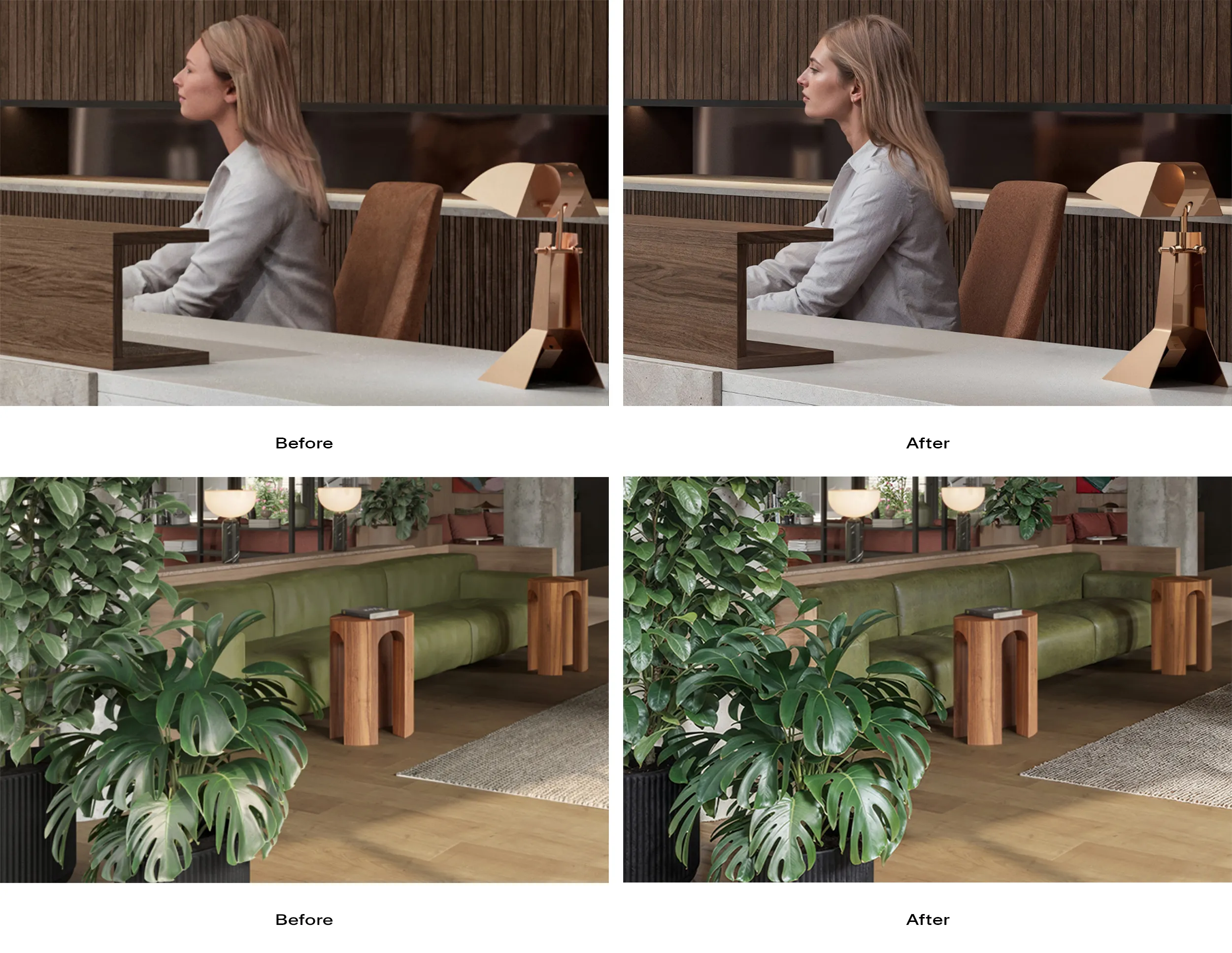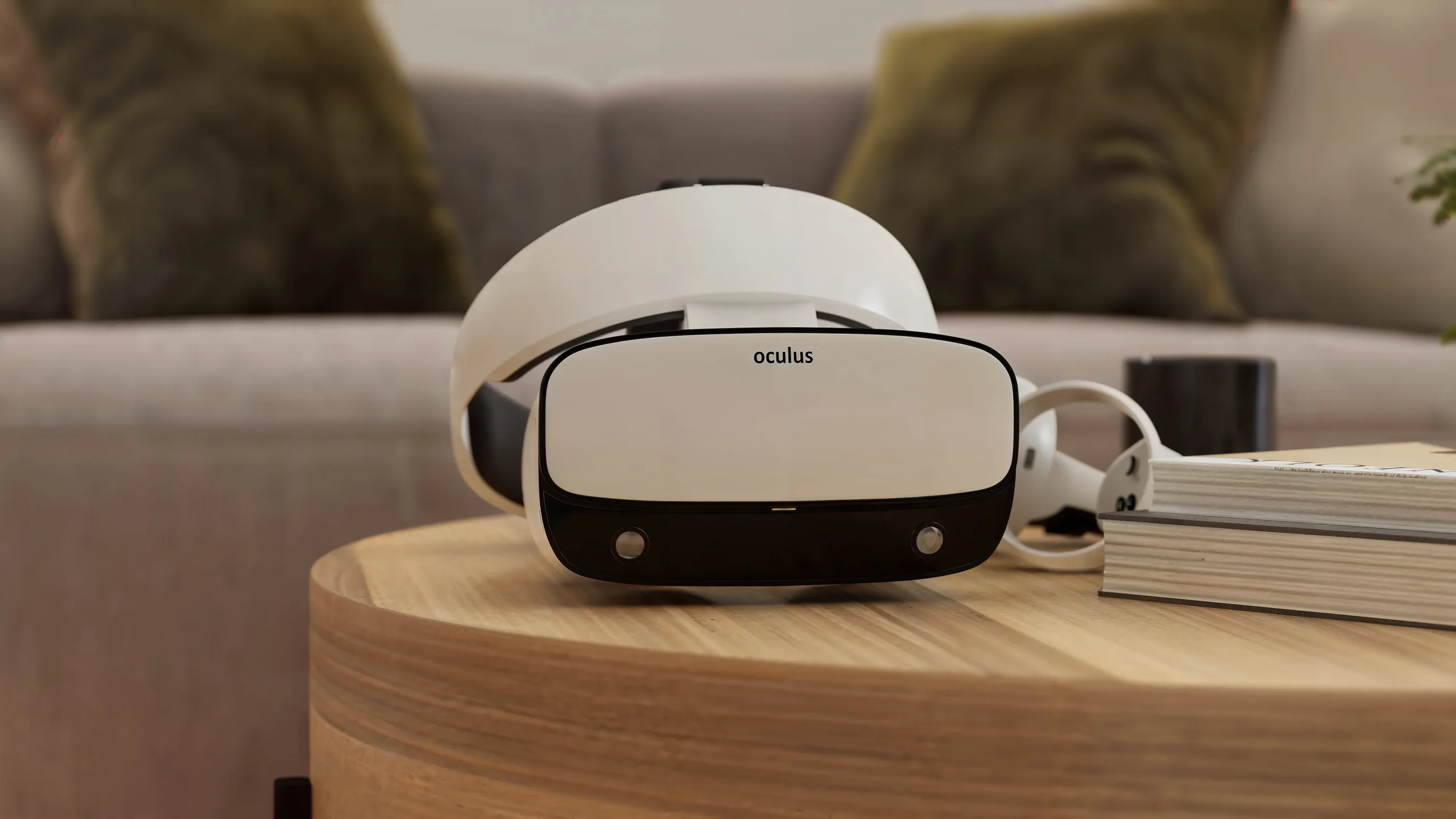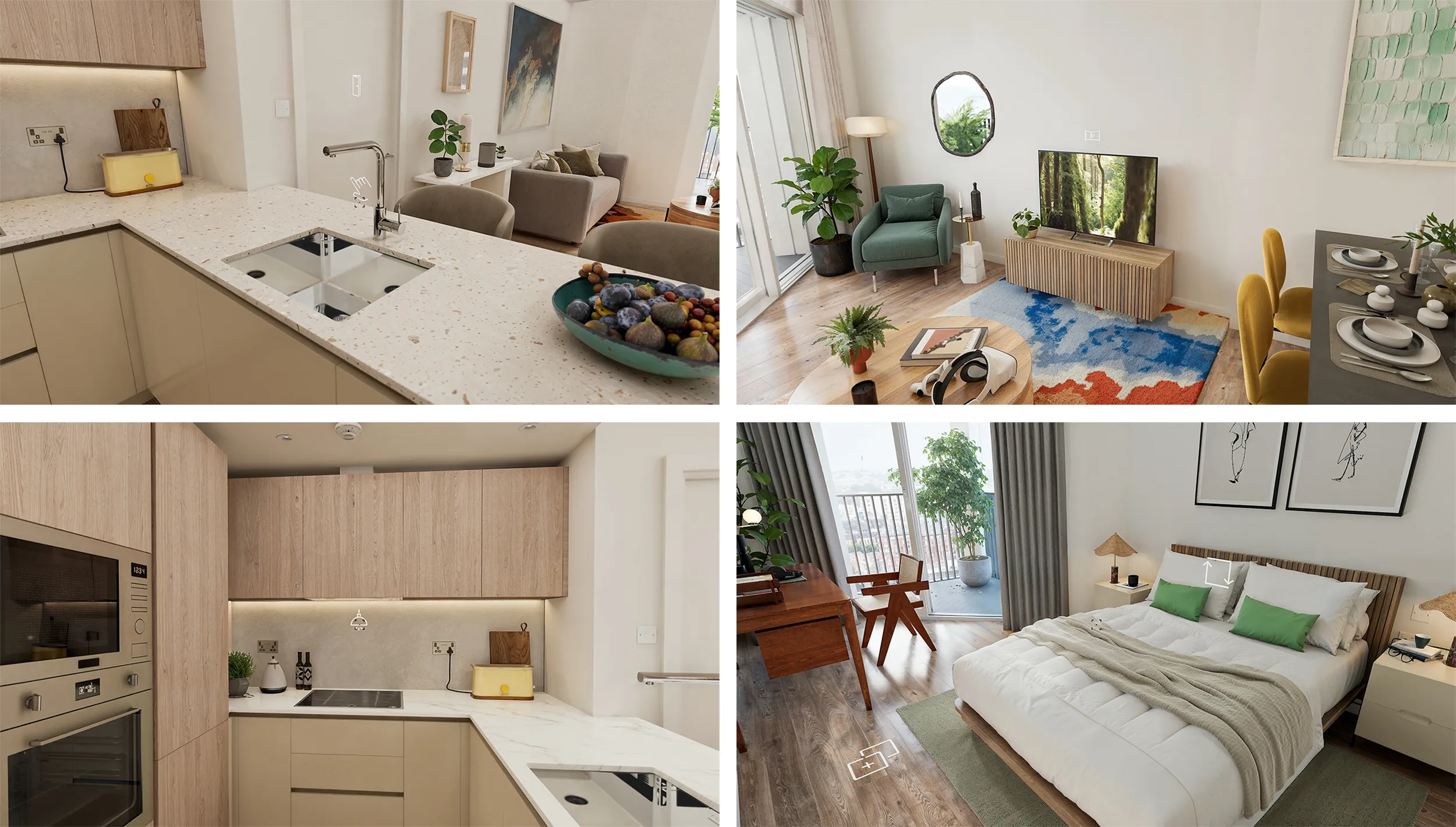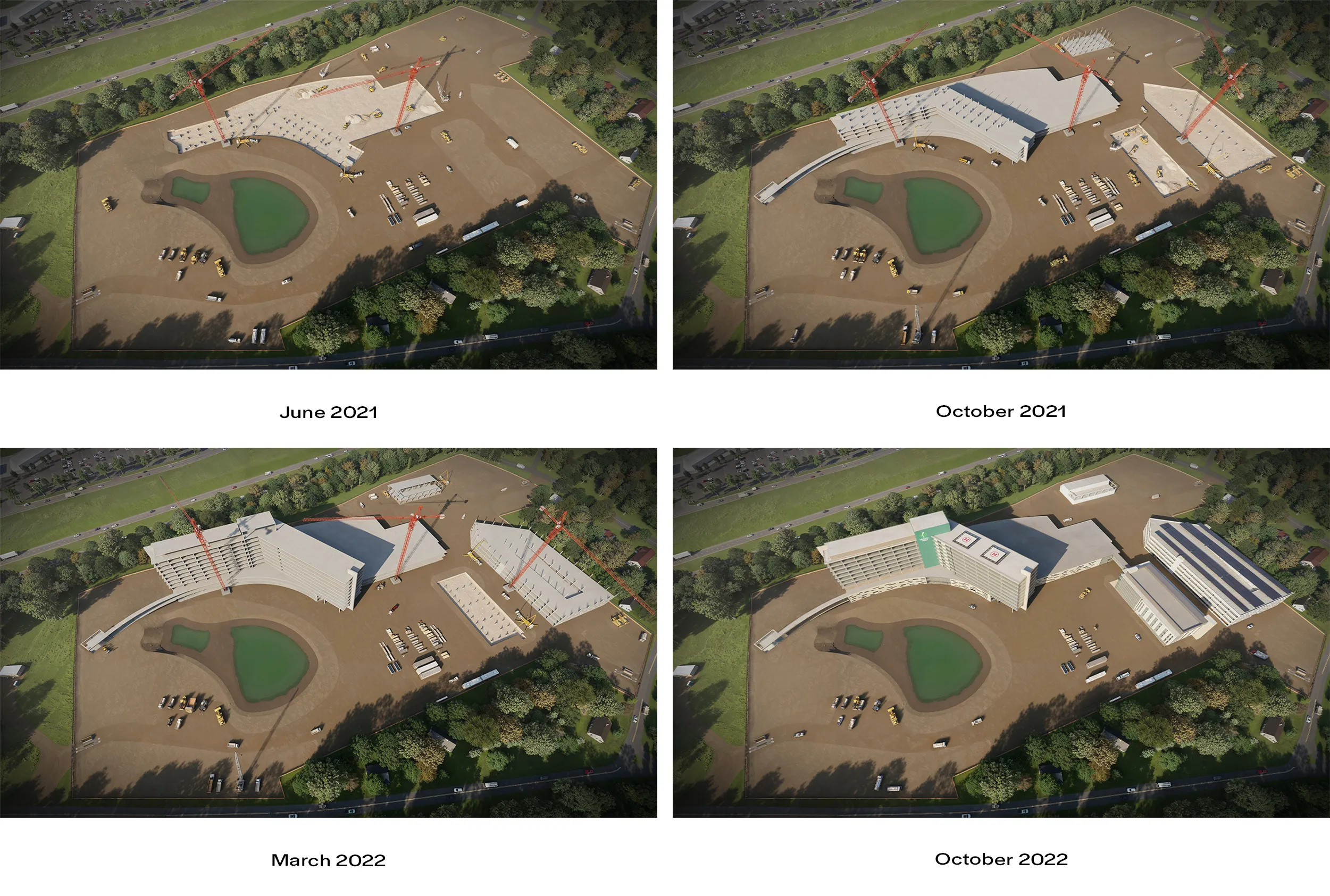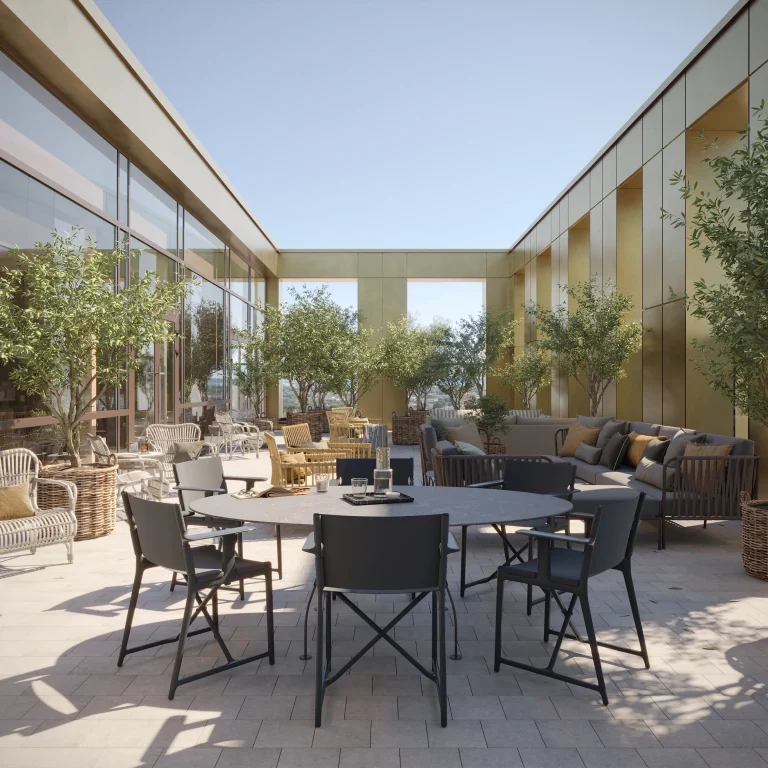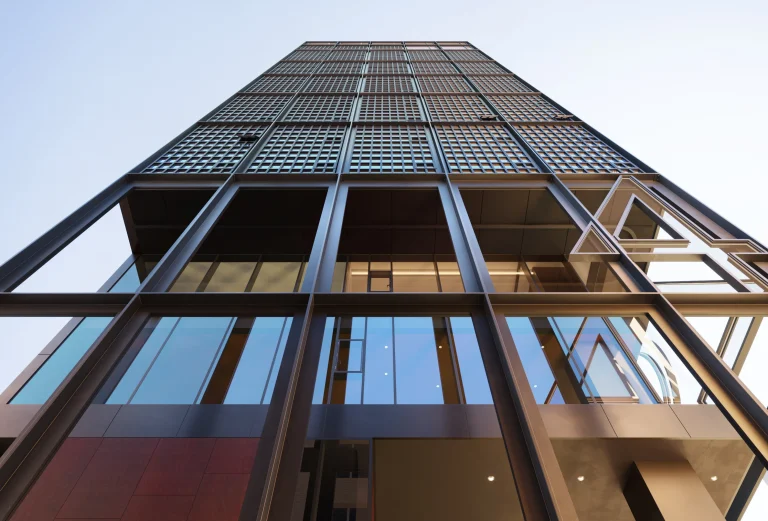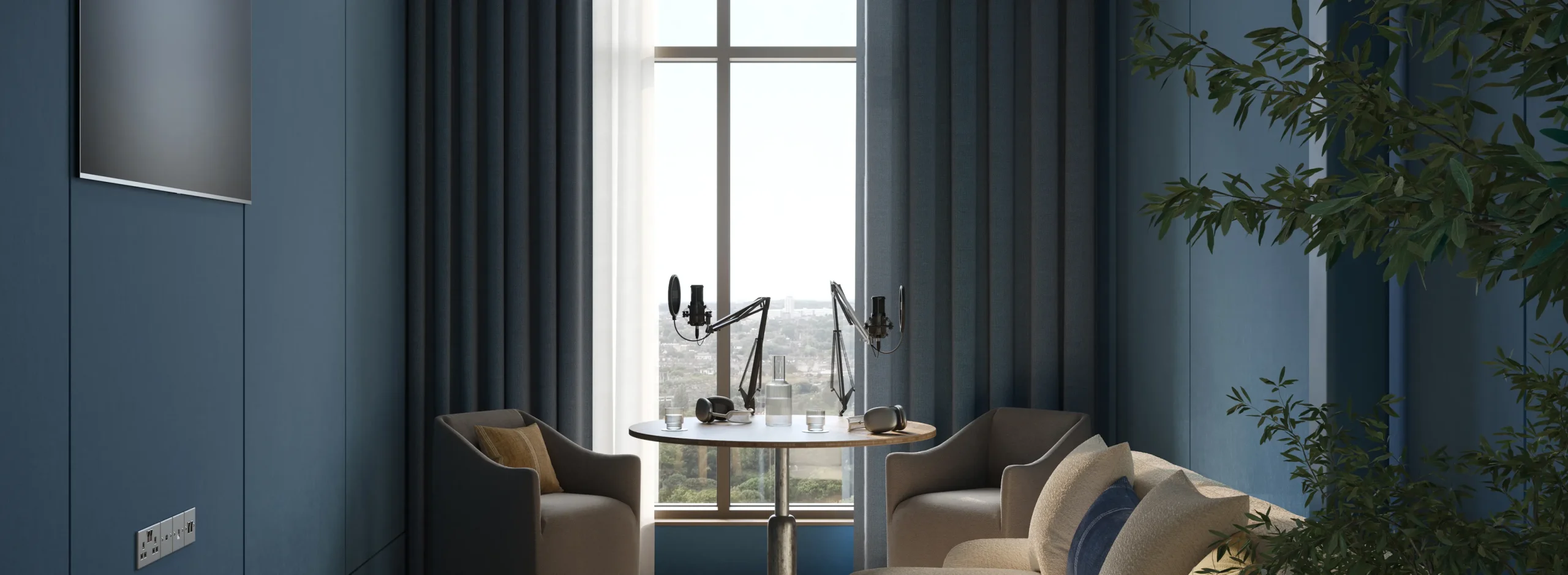
The Next Big Thing in Architectural CGI: What’s Coming in 2025 and Beyond
It’s a place where creativity meets technology.
Like everything else, architectural visualisation is evolving fast. We delve into the tools and techniques that are transforming how we experience the unbuilt and setting new benchmarks for the industry so that we can keep you ahead of the curve, always.
Let’s start with AI
Artificial Intelligence (AI) is transforming the creative industries. In the world of architectural CGI, it’s changing how we work, not why we work. We recognise the power of AI, but we also understand that AI isn’t a replacement for experience, artistic judgement or storytelling ability. We use AI tools carefully and strategically to streamline processes, test ideas faster, and ultimately deliver better outcomes. We even develop our own AI tools as part of our ongoing investment in Research & Development. We’re constantly testing new tools and staying ahead of the curve to bring the latest capabilities into our creative projects.
We use AI in different ways depending on the project. Here are just a few examples of how we integrate AI into our process:
• Concept generation and testing – We use AI to explore early ideas quickly, eliminating weaker options before committing time and energy to detailed development.
• Mood and light testing – Weather, season, time of day, and lighting scenarios can be explored rapidly, helping us make decisions about the creative direction.
• Material creation – AI can help us enhance textures and materials.
• Image to 3D model – It saves time in early modelling stages, though we often rebuild or refine the geometry manually to get the level of accuracy we need.
• Adding people and enhancing detail in images – AI is extremely useful for adding people and activity or fine-tuning visuals more efficiently.
We’re also exploring AI video generation. This is particularly exciting for us in the context of cinematic animations. We can now produce video content that combines 3D, live-action and AI-generated elements without relying on stock footage or large film crews. That means we have full creative control over movement, environment, and mood. All while keeping the overall brand vision intact. It’s a huge opportunity to push visual storytelling in new directions.
AI also supports our wider workflows. From project coordination to the more repetitive daily tasks, AI is helping free us up to focus on what really matters: telling compelling visual stories.
It’s important to say, though, that AI doesn’t make a bad image good. It can enhance detail, optimise images, and save some time, but it can’t compensate for poor composition or lack of vision. Ultimately, AI enables us to be more experimental and efficient without losing the craft behind our work. We’re excited to see where it takes us.
The rise of Unreal Engine
Unreal Engine has become a game-changer in architectural visualisation, not just as a tool but as a way to create immersive and engaging experiences. While technical capabilities like real-time rendering, fast production speeds, and handling complex scenes are impressive, what truly matters is the impact it has on storytelling and client engagement.
By leveraging Unreal Engine, architects and developers can create interactive experiences that go beyond static imagery, offering a dynamic way to explore spaces before they are built.
The platform excels in applications such as virtual tours, digital showrooms, and interactive masterplans, allowing users to engage with designs in real time. Whether it’s adjusting lighting conditions, swapping materials, or exploring different layouts, the ability to interact with a design fosters deeper connections with clients and stakeholders.
Digital twins take this a step further, providing live data integration for real-time monitoring, analytics, and sales applications. From flagship digital stores to large-scale urban developments, Unreal Engine is helping businesses create more meaningful and immersive experiences.
Bringing projects to life before construction starts
The integration of Digital Twins and 4D Construction Sequencing is transforming the way architectural and construction projects are planned, visualised, and executed. These technologies provide real-time insights, allowing project teams to anticipate challenges, optimise workflows, and reduce costly errors before breaking ground.
By combining 3D visualisations with a detailed construction timeline, 4D animations help stakeholders make informed decisions, ensuring efficiency and accuracy at every stage of the process.
Beyond visualisation, these tools also improve risk management and resource allocation. Digital twins provide a live, data-driven representation of a project, helping teams monitor progress, track materials, and predict potential clashes in sequencing.
This proactive approach minimises delays, reduces material waste, and enhances overall sustainability. Whether it’s streamlining logistics, improving stakeholder communication, or future-proofing developments with AI-driven insights, 4D construction animations are paving the way for a smarter, faster, and more sustainable built environment.
Reducing environmental impact through technology
We don’t need to explain why sustainability has become increasingly critical in architecture and more widely, but we can tell you about how the world of visualisation and storytelling is playing its part. AI and automation tools are allowing us to optimise the design and construction process, streamline workflows, and focus on the creative aspects that truly matter: problem-solving, innovation, and delivering exceptional service.
Digital twin technology is one example, creating a virtual replica of a building to analyse factors like energy consumption, lighting efficiency, and material performance before construction even begins. However, it’s not just digital twins making a difference. AI and automation are also transforming the way we work.
By reducing repetitive tasks, improving decision-making, and enhancing predictive analysis, these tools allow architects and designers to make smarter, more sustainable choices without compromising on creativity.
With real-time data, we can test different materials, optimise construction sequences, and track a building’s performance post-completion, ensuring continuous improvements. The result is a more efficient, environmentally responsible process that not only saves time and resources but also allows professionals to focus on what they do best, creating inspiring, future-proof designs.
At Project Mango, we’re at the forefront of technological advancements in architectural visualisation and storytelling. By staying ahead of the curve, we’re able to offer our clients innovative solutions that not only meet their current needs but also prepare them for the future and drive long-term value. Get in touch if you’d like to find out more about how we can use these tools on your next project.

